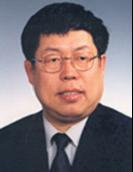
报告人简介: 李灿院士,中国科学院大连化学物理研究所研究员,催化基础国家重点实验室主任,大连洁净能源国家实验室(筹)主任,中国化学会催化委员会主任,国际催化学会理事会主席。
2003年当选中国科学院院士,2005年当选英国皇家化学会Fellow,第三世界科学院院士,2008年当选欧洲自然和人文科学院院士。在学术刊物发表正式论文400余篇。2004年获得“国际催化奖”(四年一次,每次一人),获得国家自然科学二等奖、国家发明二等奖、中国科学院自然科学二等奖、香港求是科技基金杰出青年学者奖、中国青年科学家奖、何梁何利科学技术进步奖、中国科学院杰出科技成就奖等。
主要从事催化科学和光谱学的研究工作。研制了具有自主知识产权的国内第一台用于催化材料研究的紫外共振拉曼光谱仪并开始商品化生产;在国际上最早利用紫外拉曼光谱解决分子筛骨架杂原子配位结构等催化领域的重大问题;发展了纳米孔中的手性催化合成和乳液催化清洁燃料油超深度脱硫技术等。
近年来致力于太阳能科学利用的研究,针对太阳能光-化学转化核心科学问题开展工作,在太阳能光催化制氢的基础研究方面取得重要进展。提出双助催化剂概念,发现表面异相结促进电荷分离和光催化活性,保持着光催化量子效率的国际记录,对发展高效、廉价光催化剂及其太阳能光催化制氢过程具有重要的科学指导意义和潜在的应用价值。相关研究结果发表在Angew. Chem. Int. Ed和J. Am. Chem. Soc.等国际学术刊物中,美国C&E NEWS对相关研究进展在Science & Technology Concentrates栏目中给予Highlight。多次在美国DOE能源战略会议和法国化学会可再生能源高峰会议等重要国际会议上就太阳能光-化学转化利用作特邀大会报告。
Biography: Prof. Can Li received his PhD degree in 1988 from Dalian Institute of Chemical Physics. He worked as post-doc fellow and visiting professor at Northwestern University (USA), The University of Liverpool (UK), Tokyo Institute of Technology (Japan) and Université Pierre et Marie Curie, Paris VI (France). He was promoted to a full professor in Dalian Institute of Chemical Physics, 1993, and was elected to a member of the Chinese Academy of Sciences in 2003, a member of the Academy of Sciences for Developing World (TWAS) in 2005, and the fellow of Royal Chemical Society in 2005, the member of Academia Europaea in 2008. He was appointed to the position of Director of State Key Laboratory of Catalysis in 1998, the chairman of the Catalysis of China in 2005, elected to the Vice President and the President of the International Association of Catalysis Societies in 2004 and 2008 respectively. He is on the editor boards of more than 15 academic international and national journals. Prof. Can Li has been studying catalysis and materials at molecular level and making effort to reveal the essential relationship between catalytic performance and the catalyst structure. Prof. Can Li has applied these understandings of the fundamental principles of catalysis to the design and development of more selective and active catalysts for practical applications in energy, fine chemicals and environmental industries.
报告摘要: 面对人类对能源的需求持续增长,以及化石能源的日益枯竭和其带来的环境污染问题,太阳能成为主要的可再生清洁能源的来源。本报告旨在讨论利用太阳能,催化生氢或消耗二氧化碳,探索在半导体基光催化剂表面的光催化反应和光化学反应。半导体材料被认为是最有前景的光催化剂,其材料合成是发展先进催化剂的核心。减少电荷重新复合,是提高太阳能转化为化学能的关键,关系到太阳能的转换效率。我们近期的研究结果发现了提高光催化制氢的关键因素,通过Pt-PdS/CdS催化体系使其量子效率提高到93%,提供了发展高效催化剂体系的方法。
Abstract: Solar energy is the primary source for clean and renewable energy alternative. The concerns about the depletion of fossil fuel reserves and the pollution caused by continuously increasing energy demands make solar fuels an attractive energy source. This lecture discusses the key issues concerning the photocatalytic productions of solar fuels, mainly photocatalytic hydrogen production and photocatalytic reduction of CO2 utilizing solar energy, focusing on the fundamental understanding of photocatalysis and photochemical reactions on semiconductor-based photocatalysts. Semiconductor materials are believed to be the most promising components for photocatalysts, so the discovery and synthesis of novel semiconductor materials are crucial for the development of advanced photocatalysts. To convert solar energy efficiently to chemical energy, much attention has been paid to reducing charge recombination and improving solar energy conversion efficiency. Our recent results demonstrate that the formation of surface phase junction and hetero-junction on semiconductor catalysts can significantly enhance the activity in photocatalytic hydrogen production. By mimicking the photosynthesis, loading spatially separated dual cocatalysts for oxidation and reduction on semiconductor nanoparticles can effectively avoid the charge recombination and consequently increase the photocatalytic activity. A recent progress made in photocatalytic hydrogen production shows that a quantum yield up to 93% can be achieved for Pt-PdS/CdS catalysts where the dual co-catalysts, Pt and PdS nanoparticles act as reduction and oxidation co-catalysts respectively. The finely designing and preparation of junctions at atomic and nano-scale together with spatially separated dual co-catalysts findings is a strategy to develop highly active photocatalysts for solar fuel production.
|